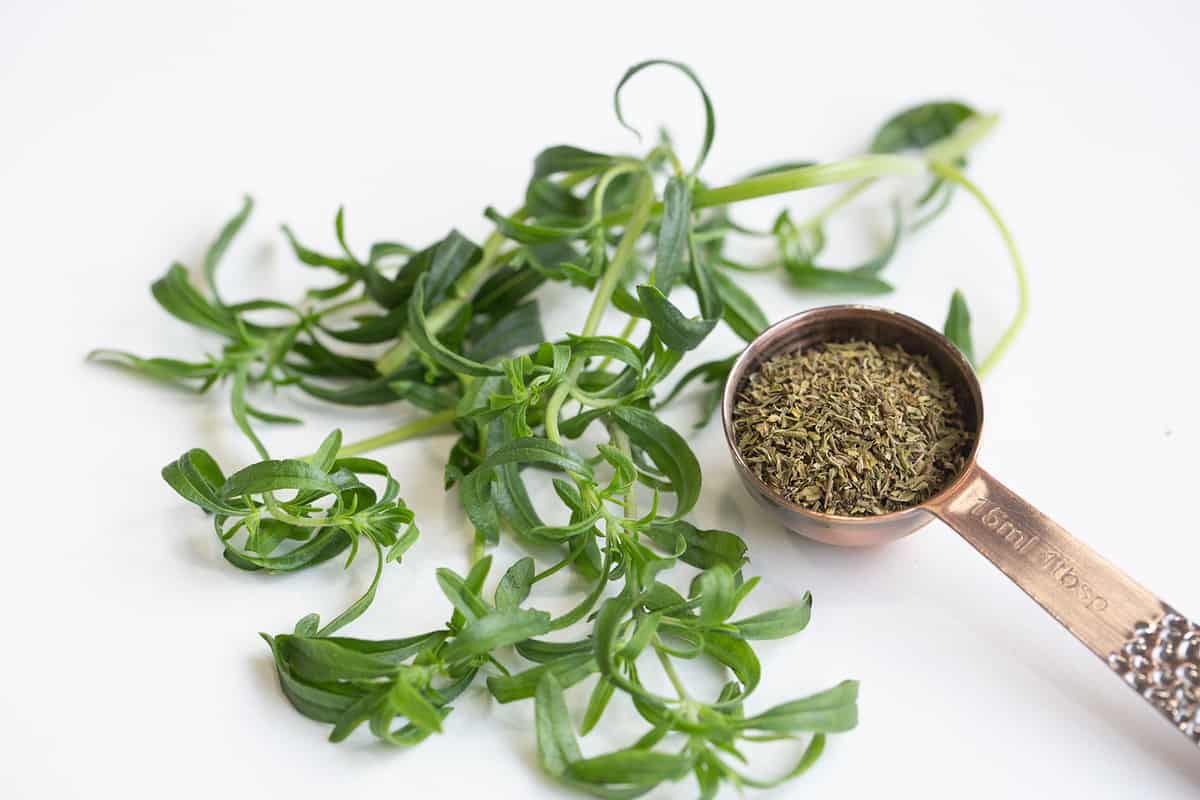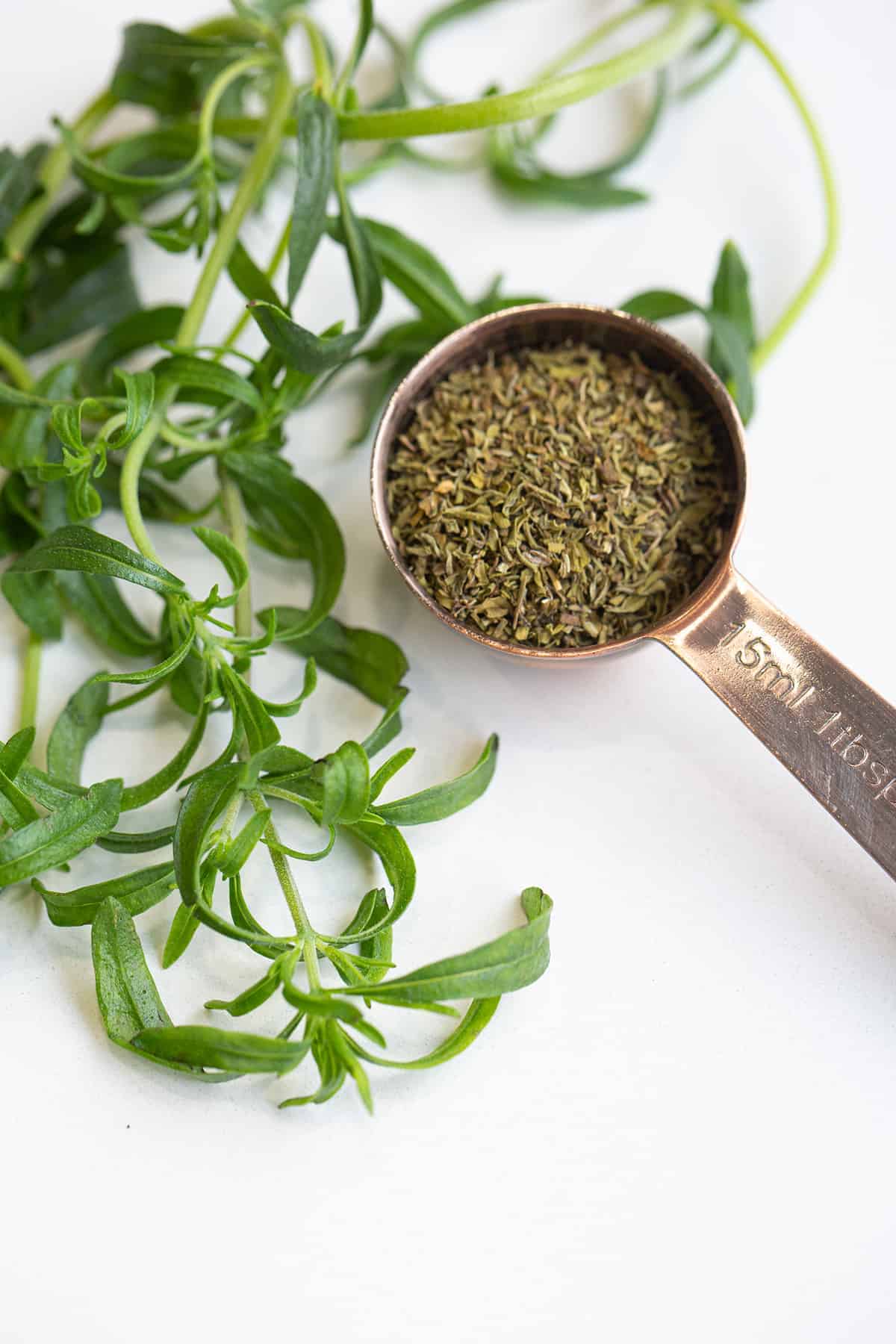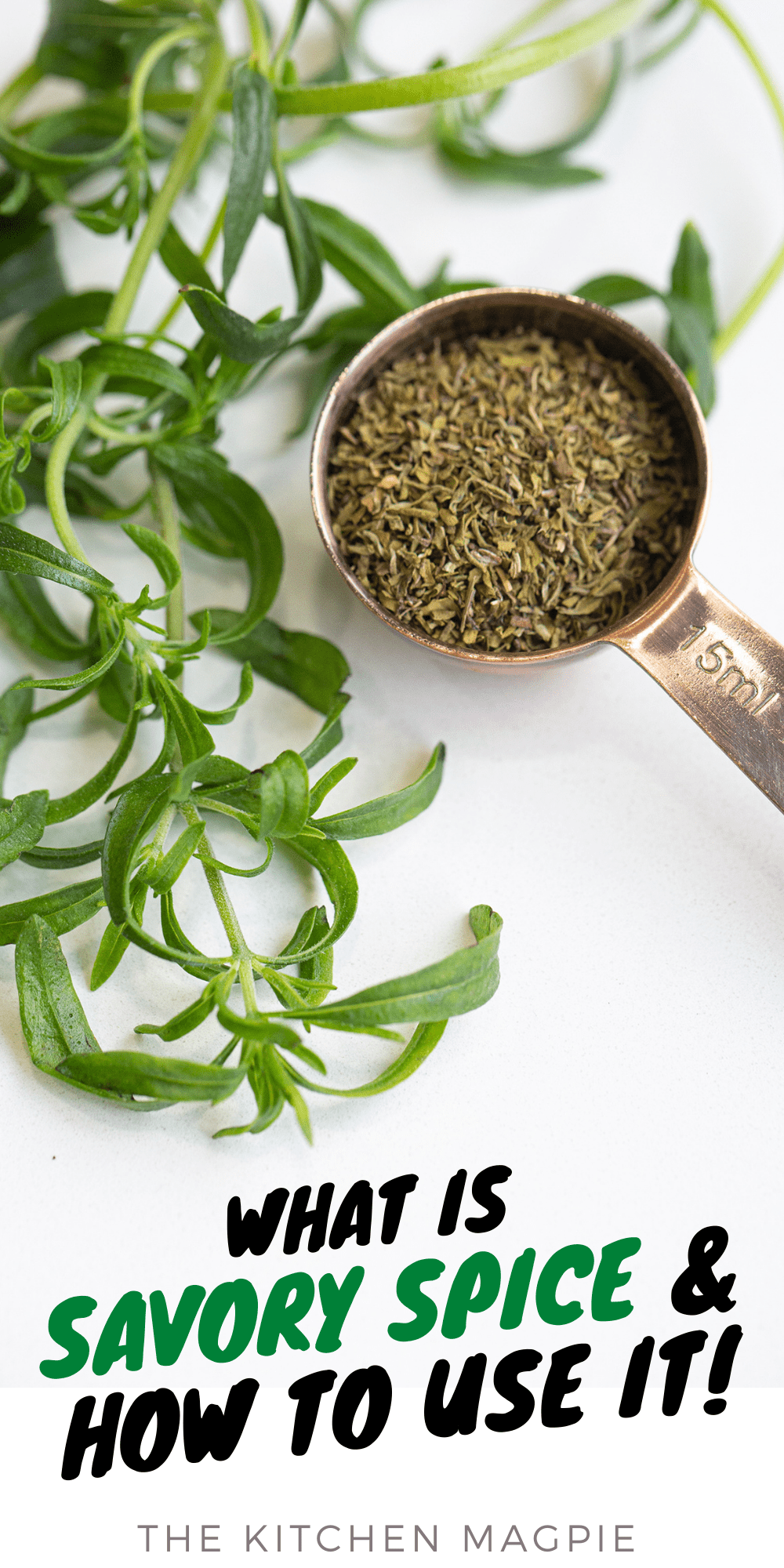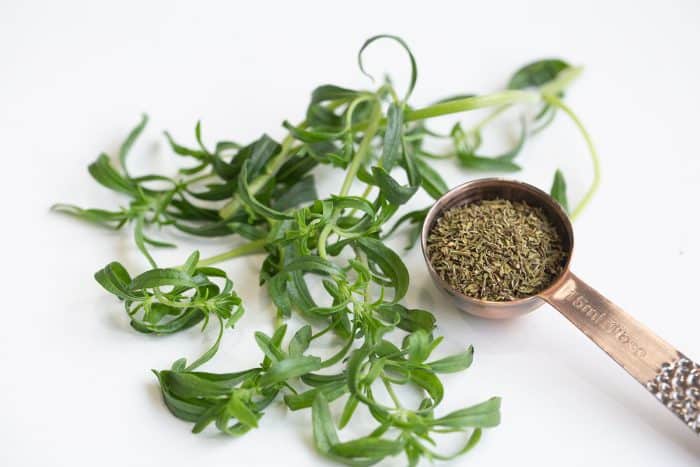This post may contain affiliate links. Please read our privacy policy for additional information.
If you have spent any time trawling cookbooks and culinary websites looking for dinner inspiration, you will likely have encountered the confusingly named herb, Savory.
At first glance, it seems like the recipe is asking you to ask for any generic herb that you might find in a savory dish. But in actual fact, savory is an herb in its own right, related to the rosemary, sage, and mint plants, and it has a bit of a similar profile to its cousins.
But what exactly can you expect from a Savory spice? What does it taste like, and should you use it?

The Two Main Types of Savory Spice
Before you can learn about Savory’s flavor profiles and uses, you first need to understand which type of Savory you are talking about.
To help make everything extra confusing, two different types of Savory are widely cultivated:
- Summer Savory is the more common of the two and is the type you are most likely to find dehydrated into seasoning blends like Herbs de Provence.
- Winter Savory, meanwhile, is a bit older and is grown more frequently as an ornamental edging plant for herb gardens because of its slightly different flavor profile.
So, what are the taste differences between the two? When should you use one over the other?
What Does It Taste Like?
While both Summer Savory and Winter Savory are closely related, subtle distinctions in flavor give each its own unique uses.
Starting with the most popular, Summer Savory’s flavor and aroma is closer to the gentle herbaceousness of both rosemary and thyme.
It is both sweet and spicy, with a gentle light that reminds you of delicate dishes cooked by expert chefs. Common is reasoning blends, sausages, and event traditional Bulgarian dishes, this is the gentler, sweeter, and more multi-purposed of the two Savories.
Winter Savory, meanwhile, is a bit more harsh and bitter. It has a very “wintery” flavor profile, with familiar twangs of pine and sage and a bit of that harsh spiciness you might expect in winter dishes. It is typically used in meat and bean dishes, going particularly well in lightly cooked foods like chicken or fish.

What Can I Use Savory For?
Using Savory in cooking can sometimes be a bit of a challenge because besides using Herbs de Provence, there aren’t a lot of recipes that typically call for it.
However, savory helps make it a bit easier by living up to its name; you can honestly use it in any savory dish and expect some excellent results.
The only thing you need to be careful of is that, like Rosemary, Savory can be surprisingly overpowering if you use too much of it.
The best approach is to treat this herb as a finishing touch on different recipes, especially if you plan on cooking them for a long time.
If you don’t want to grow it yourself, dried Savory in those handy herb jars will keep for months or even years as long as they are kept away from moisture. This lets you sprinkle in a little bit whenever you need it.
Other helpful articles you may enjoy:
Pin This Recipe to Your KITCHEN TIPS AND TRICKS Boards and Remember to FOLLOW ME ON PINTEREST!













Lucy says
The black handled “thing” is actually a handle that can be attached to a corning ware casserole dish where there is a small handle on the side.